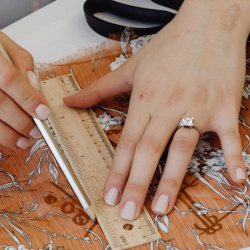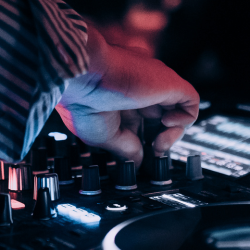3D character animation is a dynamic art form that brings digital characters to life in films, games, advertisements, and virtual worlds. By combining creativity, technical skills, and storytelling, animators can create lifelike movements and expressive personalities for characters.
In this guide, we’ll explore what 3D character animation is, how it works, the step-by-step process, and the tools required. We’ll also cover how to make your own 3D anime character, its applications across industries, common challenges, and emerging trends. Whether you’re a beginner or a professional, this guide helps you master this exciting craft.
What Is 3D Character Animation?
The act of creating and controlling digital characters within a three-dimensional space is known as 3D character animation. Unlike 2D animation, where the animator works with flat drawings, 3D animation creates a character that has depth, realistic movement, and a character that can move in the virtual world. To bring their characters to life, animators use a variety of techniques to animate digital characters, including modelling, rigging, texturing, and motion. These animations play a role in a lot of modern digital storytelling formats; previously stated examples include feature films, video games, commercials, or interactive experiences in VR or AR.How to Animate 3D Characters: Step-by-Step Process
Animating 3D characters involves multiple stages, from concept creation to rendering. Understanding each step ensures smooth workflow and professional results.Storyboarding & Concept Creation
Animation Storyboarding and concept creation lay the foundation for any 3D character animation. Animators sketch key scenes, character actions, and camera angles to visualize the story before modeling. This step ensures a clear roadmap, saving time and reducing errors during animation. Tip: Use sketches or digital tools to map character actions and camera angles. This saves time and prevents errors later.Modeling: Designing the 3D Character Structure
Modeling is the process of creating the 3D structure of a character using polygons, curves, and meshes. It defines the character’s shape, proportions, and features before adding details. A well-built model ensures smooth rigging and realistic animation later in the workflow. Pro Tip: Focus on proportion, anatomy, and design consistency. Start with a simple model and refine details gradually.Rigging & Skeleton Setup
Rigging involves creating a digital skeleton that allows the 3D character to move naturally. Joints, bones, and control handles are set up to mimic realistic motion. Proper rigging is essential for fluid animation and expressive character movements. Example: A human character needs bones for arms, legs, spine, and facial expressions. Rigging makes movement natural and flexible.Skinning and Texturing for a Realistic Look
Skinning attaches the character’s mesh to the rig, while texturing adds color, patterns, and details. This step enhances realism and visual appeal. Tip: Use high-resolution textures and realistic shaders to create believable skin, clothing, and accessories.Motion & Animation Techniques
Animation techniques include keyframing, motion capture, and procedural animation. These techniques determine how characters move, interact, and express emotions. Pro Tip: Study real-life references or videos to replicate natural movement. Subtle details like blinking, breathing, and weight shifts make animation lifelike.Rendering and Post-Production
Rendering transforms the animated 3D scene into a final image or video, complete with lighting and shadows, as well as textures. Post-production is where the visual content is artificially enhanced, including color grading, compositing, and special effects. This phase polishes the entire animation and makes it look realistic, and it is ready for presentation and distribution. Takeaway: Proper rendering settings and post-processing enhance visual quality without overloading hardware.Tools & Software for Creating 3D Animated Characters
To create a 3D animated character with personality and character requires a particular software which can efficiently make your vision into reality, while also catering to other programs more specialized for beginners or professionals wanting to take advantage of motion capture, or other tools like AI-assisted animation. Choosing a program will impact workflow, quality, and possibilities with different creative methods. Let’s take a closer at some of the more popular and even more effective 3d animation software used in industry now.Beginner-Friendly 3D Animation Tools
Beginner animators can start with software like Blender, TinkerCAD, or Daz 3D. These tools provide intuitive interfaces and learning resources for creating simple 3D characters. Tip: Start small and gradually explore advanced features like rigging and particle effects.Professional Software for Advanced Animators
Professionals often use Maya, 3ds Max, Cinema 4D, or Houdini. These programs offer advanced modeling, rigging, and rendering capabilities for high-quality projects. Example: Major studios use Maya for movies and AAA games because of its flexibility and robust animation tools. Read About: Top 10 Animation Studios in IndiaAI & Motion Capture in Modern 3D Character Animation
AI and motion capture accelerate animation by generating realistic movements automatically. Motion capture suits record live actors’ performances, which are applied to digital characters. Tip: Use AI-assisted animation for facial expressions, walk cycles, and repetitive actions to save time while maintaining realism.How to Make Your Own 3D Anime Character
Making your 3D anime character yourself is a wonderful way to combine technical skills and creativity together. It involves conceptualizing the character’s look and modeling it in 3D; finally, you bring the character to life, through expressions and poses that convey personality. Both beginners and professionals can experiment with different styles, textures, and techniques to convey a vision. While not in any specific order, let’s take a look at the steps that might help you create an appealing character in both 3D and presentation.Choosing the Right Design Style
Choosing the correct design style is the key to creating a solid foundation for your 3D anime character. You will need to decide if you want your look to be chibi, realistic, or classic anime style as each of these styles will have implications on proportions, detail, and overall character look. If you are consistent with a style, then your character will look appealing to your audience while asserting an aesthetic sense and elevating your creative vision. Pro Tip: Reference popular anime for proportions, hair, and clothing details to maintain authenticity.Creating a 3D Illustration of an Animated Character
The modeling process in this step is executed in a 3D software and ultimately is where your character comes into life by shaping the base shapes, generalized facial features, and big details. From there you will determine, proportioning and added accessories or clothing for interest and realism. Creating a 3D representation of a character is the first step towards animation and building the framework of expressions. Tip: Keep models lightweight and optimized for animation, especially if planning to animate or render in real-time.Adding Personality and Expressions to Anime Characters
Expressions bring your anime character to life. Use blend shapes, facial rigs, and body poses to convey emotions. Example: Smile, frown, or shocked expressions can make your character relatable and engaging.Applications of 3D Character Animation Across Industries
3D characters have a wide range of animation applications across multiple industries. They enhance storytelling, marketing, and immersive experiences.Movies & TV Shows
Animated films and series rely heavily on 3D characters for engaging storytelling. Characters like those in Frozen or Spirited Away showcase expressive, lifelike movements.Video Games & Virtual Worlds
Gaming demands characters with realistic motion and interaction. Popular franchises like The Last of Us or Cyberpunk 2077 use 3D character animation for immersion.Advertising & Marketing
Brands use animated mascots or product characters to engage audiences. 3D characters add creativity, fun, and memorability to campaigns.AR, VR & Metaverse Experiences
3D characters power virtual reality, augmented reality, and metaverse environments. Interactive characters enhance experiences, making digital worlds more realistic and immersive. Also Know: What is Taught in AnimationCommon Challenges in 3D Character Animation & How to Overcome Them
There are plenty of issues with 3D animation that can lead to poor results. Animators most commonly become bogged down in improper motion, rigging issues, or rendering slowness, all of which add time to the workflow of animation while impairing the overall quality of the animation. Each of those things usually requires deliberate assessment and consideration at various points in the production. If there are issues to be made, it is ideal to have references to demonstrate properly natural motion, work through animation tests, and simplify more complex rigging that could cause issues. In turn, organizing processes in an efficient manner would lower rendering issues and lower the chance for mistakes, and streamline the workflow into a nice, smooth, productive, professional and polished result.Future Trends in 3D Character Animation
Presently, the cornerstones of 3D character animation are determined by AI, real-time rendering, and virtual production. Sophisticated and developed technologies, such as motion capture suits, VR integration, and AI-generated animation tools, are giving animators the ability to create characters that are more lifelike, dynamic, and expressive while providing efficiencies. These technologies also shorten production times while providing even more options for creative storytelling. AI and machine learning are being utilized more and more to support and automate boring tasks, improve facial expressions, and create lifelike movements. As these technologies advance, animators will have even more creative freedom and opportunities to create content that is more high quality for film, video games, advertising, and immersive virtual experiences that push the boundaries of the medium of digital animation.Conclusion: Mastering the Art of 3D Character Animation
Mastering 3D character animation requires creativity, technical knowledge, and practice. By learning how to animate 3D characters, understanding software tools, and exploring styles like anime, you can create compelling digital characters. This skill opens doors across movies, gaming, advertising, and immersive media. Continuous experimentation and education, such as a 3D Animation Course, help you refine techniques and stay ahead in this dynamic industry.FAQs
What is 3D character animation and how does it work?
3D character animation is the procedure of producing realistic digital personas through the methods of modeling, rigging, texturing and moving. It is a fusion of artistic and technical skill to create animated characters.How to animate 3D characters step by step?
Animating 3D characters consists of storyboarding, modeling, rigging, skinning, animating the motion, and rendering. When sticking to a prescribed flow it is assured that the movements are fluid, realistic, and expressiveness is obtained for the animated characters.What tools are best to create a 3D illustration of an animated character?
There are programs that uphold an easy workflow that is useful for beginners, such as Blender or Daz 3D, which will allow you to create fast, simple 3D characters. On the other side there is more professional software that you can use, such as Maya or 3ds Max, that will allow you to illustrate with lots of detail and will allow you to put in advanced animation with rigging.How to make your own 3D anime character at home?
Decide on a design style, and create an original base 3D model, texture it, and encourage character with facial expressions and personality. Software such as Blender or Clip Studio Paint 3D can help a beginner develop anime characters.Is 3D character animation hard to learn?
Starting can be a bit difficult with the technical skills involved, but when you have a structured way of learning, practice, and follow along with some tutorials, it becomes easy. Start very simple and work your way up to more technical portions.Which type of 3D animation is most used in gaming?
Character animation and motion capture are used most commonly in gaming because it gives realistic, interactive movement that responds to player action.How long does it take to create a 3D animated character?
Making a 3D animated character can take anywhere from a few hours if making something simple, to several weeks to design a reflective, rigged, and textured character like you would see in a movie or game.What are the future opportunities for 3D character animators?
The opportunities are growing in movies, gaming, advertising, VR/AR, and the metaverse. Animators can work in studios, freelance, and/or create content for immersive experiences at Home.(Visited 118 times, 1 visits today)
Popular Search
Top 10 DJ India
Makeup Steps
Advantages of Makeup
Interior Designer Salary
Makeup Artist Course
Benefits Of Photography
Hospital Waste Management
Types of Fashion Designing
Types of Lenses in Photography
How to Become a Radio Jockey
Best Nutrition Courses in India
Importance of Media Management
How To Become a Dietitian in India
Importance of Nutrition in Health
Interior Design History and Origins
Top 10 Famous Interior Designers
Top 10 Music Labels in India
Top 10 Best Animation Studios in India
Top 10 Nutraceutical Companies in India
Top 10 Fashion Designers in the World
How To Write a TV Commercial Script
Top 10 Career Opportunities in Fashion Designing
Advantages and Disadvantages of Animation



















